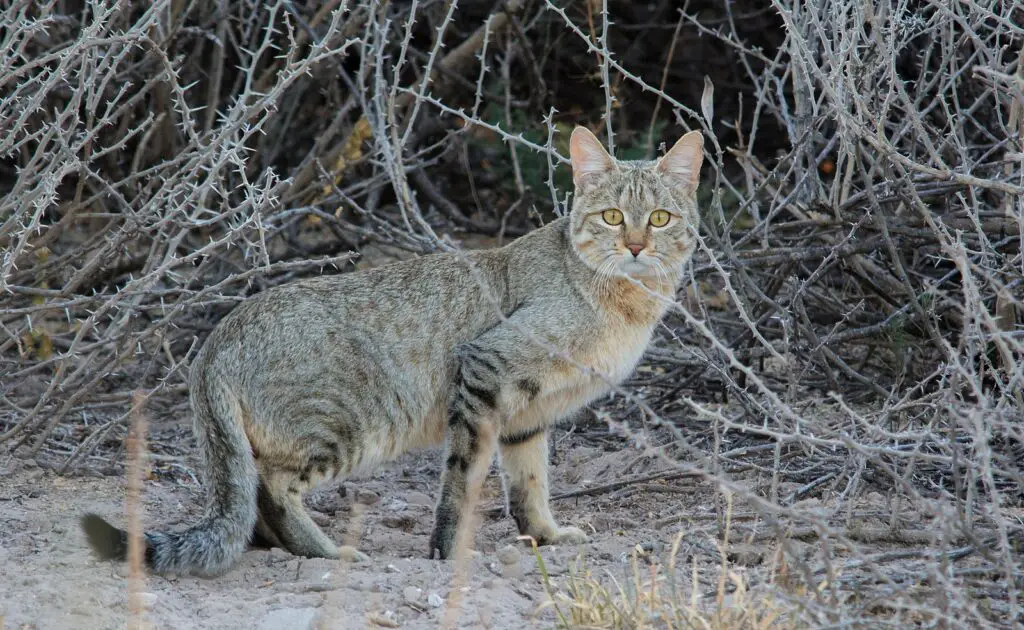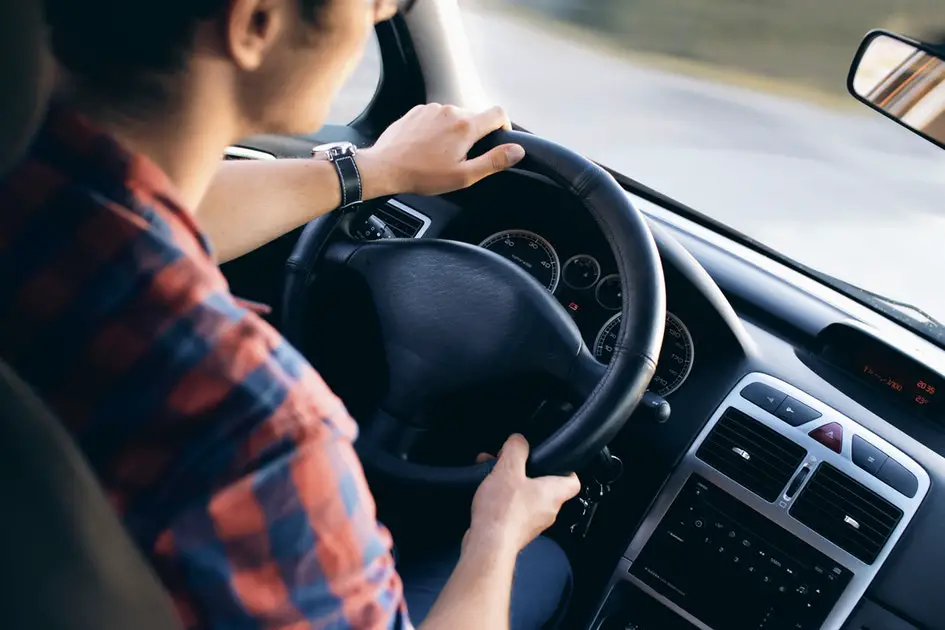We hope you like the products we recommend! Just so you know this post contains affiliate links and I will be compensated if you make a purchase after clicking our links.
They aren’t known for their love of travel, but why do cats hate car rides?
There are several reasons. For starters, they don’t like leaving their territory. Cats are territorial animals by nature, and leaving a safe and familiar space for somewhere new and unknown will be unsettling. If you’ve ever moved house or school as a child, then think back to how tough and isolating that felt. Cats use smell to navigate their environments, so not only will they see that they’re somewhere else, they’ll smell it too. You might get into your vehicle and smell pine air freshener, but cats have a sense of smell that’s 14 times better than humans. You bet she’s picking up on everything that’s happened in that car recently — the passengers, the other pets, the food, the luggage, etc.
It’s not just in cars that this happens, either. Cats can also become depressed and anxious when moving into a new home, partly because it doesn’t smell familiar or safe to them. And while cats don’t remember things as specifically as humans, they rely on sensory memory and often associate places with previous experiences or emotions. Think about when you’re most likely to put a cat in a car — to go to the vet or the cattery. The cat will associate how it felt in those situations (scared, anxious, ill, motion sick, etc.) with the car.
For most cats, a trip in the car to the veterinarian’s office is unlikely to be a source of happy memories. If every time you got into a car, you got a thermometer shoved into your butt ten minutes later, you’d probably kick up a fuss in the carrier too. The Second Opinion Doc website says that cats are 200 times better at retaining memories than dogs, which will also contribute to why they can struggle to cope during car rides.
Cats that struggle with staying in a cattery will also associate the car journey with stress and anxiety. Owners shouldn’t underestimate how these can completely change a cat’s behaviour.
Dogs tend to fare better in cars. One reason for this is that they’re more likely to travel in a car than a cat. We drive dogs to the beach or out on long walks in the country. When visiting relatives out of town, we may take them too. They have more positive exposure to the car than cats do. And when a canine is nervous or anxious, we’re more likely to encourage them and persevere with curing their discomfort. We’ll take our time and train them. With cats, we tend to bundle them in the carrier and hope for the best. That’s understandable, but it’s not the best experience for them, and often, it’s stressful for the owner too.
Felines can be exceptionally tuned into their owner’s mood. If you’re nervous about putting them into a carrier and then into the car, they’ll pick up on that and react accordingly, so it’s no wonder cats hate car rides if you hate traveling with a cat too.
And cats can suffer from motion sickness, which will make the whole experience even worse for them. It may affect their sense of balance and leave them feeling nauseous and disoriented. There are several symptoms of motion sickness, including excessive vocalisation, panting in the car, licking the lips, or vomiting.
Cats are creatures of habit, too. You might notice they often have a routine — sleeping in the usual places, waking up or wanting food at roughly the same time of the day. Car trips with cats are often unfamiliar and unexpected, especially to them. The only warning they might get is that the cat carrier has appeared out of the closet — which no doubt brings its own problems.
This is especially true if you’ve been hiding the carrier from them until the very last moment (as most people do for understandable reasons). You’re disrupting their day-to-day, interrupting their napping and eating, and you better believe they’ll hold a grudge!
Wild Cats Hate Car Rides, too
Cats aren’t domesticated like dogs are — that’s worth repeating. There’s a fascinating article on the National Geographic website where DNA analysis shows that cats actually ‘domesticated’ themselves. There’s really little difference between our house moggies and cats in the wild. As the Smithsonian website writes, cats do pretty well for themselves even if there’s no human around to open a tin. They weren’t bred for a specific purpose like dogs were and, therefore, still have that ‘wild’ streak. Given that cats are both deeply solitary and territorial (as were their ancestors), it makes sense that car rides would be an anxiety-inducing experience.
Imagine if you were bundled up into a box and then moved to a new location — think of the smells, the smudge of suburban neighbourhoods sweeping past the window at speed and the physical feeling of traveling that quickly.
Cats all evolved from the same family at some point. That includes lions, panthers, and tigers. The lineage first split almost 11 million years ago, and according to the Cats Protection League charity, domestic cats still share 95.6% of their DNA with lions. Domestic cats may have started appearing around 10,000 years ago in the Middle East, and it’s believed the African wildcat is their closest ancestor.
We shouldn’t underestimate how traits can be hardwired into feline DNA. For example, it’s why cats still insist on trying ‘burying’ food when they’ve eaten enough. Our cat does it all the time, but she doesn’t realise that she’s actually just wiping her paws over linoleum or against the refrigerator.
Want to see how different an African wildcat looks compared to a domestic one? Compare the different dog breeds to their common ancestor — the grey wolf.

So next time you’re wondering why your cat doesn’t like car rides, remember that you’re sharing a vehicle with a barely-domesticated wild animal!
Cats appear to have a better memory than dogs do. They’re able to associate the carrier with a feeling of what happened. For most of us, it means that cats do remember going to the vet or getting their claws clipped.
It doesn’t mean they’ll remember it specifically in the same way a human would but they’re better than dogs at recalling how that experience felt. If it was upsetting or frightening, then they’re likely to recall those feelings.
Helping cats hate car rides a little less
Most cats that hate car rides probably hate their carrier too. Ideally, the day you bring your cat home as a kitten or from a rescue or from foster is to get them used to the carrier. You want to take the fear away. Don’t just bring out a hard or soft cat carrier when it’s time to get in the car.
Put it somewhere in the house where the cat can see it and smell it. Leave it open so they can climb inside, too, if they want to. Make it a comfortable and inviting space by placing blankets inside (preferably ones that smell like them or like you), and put toys and a few treats in.
This may take some time, especially with older cats who may have a deep suspicion of the carrier, but it’s worth trying. Don’t force them inside or make a big deal out of it. Ideally, you want the cat to go in and transfer its scent on the inside. At least then, when they get into the car, they’re in a comfortable and familiar space.
If your cat looks interested but won’t go inside, you can try to add the scent yourself. Some people will get a small soft cloth and gently wipe a cat’s cheeks and then rub this inside the carrier. You can also buy pheromone spray, which is designed to do a similar thing but is made from a synthetic formula. If you’re in the UK, you can also try Feliway spray which helps reduce anxious behaviour.
You may need to review the cat carrier that you’re using. There are actually a lot of different choices now (we’ve written a post previously on the best cat carriers for long car trips). If your cat is prone to anxiety or aggression even before getting into a vehicle, then we’ve also explored some of the best cat carriers for difficult cats.
If cat carriers aren’t working, then you might think about trying a cat car seat as an alternative.
You can get medicine to calm cats for travel. Some are over-the-counter human drugs like Benadryl, which some owners do use, but you can also get sedatives prescribed by your vet. We’d always recommend speaking to a veterinarian before giving a pet a drug, however.
You might also want to let the cat explore the car before your journey. Keep the windows down and the doors locked but let them walk over the seats and have a good sniff. Take some treats in, too, so that they’ll associate getting into the car with getting something tasty to eat.
You could also start the engine to introduce them to its rumbling. Just be sure to supervise them carefully. If you think that it’s the carrier more than the car causing anxiety, then you can buy a cat car barrier which keeps the cat secure during the journey but which allows them some measure of freedom.
Some cats prefer the carrier to be covered over with a towel or blanket. Others would rather be able to look outside. Try both and see which your cat is happiest with.
So why do cats hate car rides? Because it’s an unfamiliar space, it takes them away from their territory and is often a precursor to an unpleasant event like going to the vet. We don’t help our felines create better associations with vehicles the way that we do with dogs, but with a little effort, you can make a car ride less stressful for everyone — owner included!

Pingback: How To Travel With A Cat | Tortuga